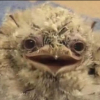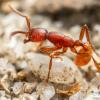So I thought you guys might be interested in this. Below is an unidentified queen from the genus Crematogaster that I found wandering in a trail of workers which were the same size as the queen (there were multiple of these queens). This was strange because I could recall no Crematogaster in the area with similar looking queens (fun fact I had actually encountered these queens once in the same situation at the start of my anting career, around 4 years ago).
Location found: Hong Kong, 400m above sea level
Habitat: subtropical evergreen broad-leaved forest, young secondary forest
Size: 5mm
Pictures:
I also want to highlight some weird/notable features of the ant above
1. A fairly truncated head
2. Angular gaster. The connection point between the abdomen and the post-petiole are quite angular, almost at a 90 degree angle.
In comparison, here's the same area on another crematogaster queen (Crematogaster aegyptiaca picture I grabbed from antweb)
3. sickle-like toothless mandibles
All in all, a pretty weird ant. I think its probably some socially parasitic species (still strange that it was just running out in the open with some workers). I've already given the specimens and the "host" workers to the local university, and the guy there said its pretty interesting so I guess we'll wait and see.
What do ya'll think?
Edited by Leo, August 17 2023 - 3:18 AM.














